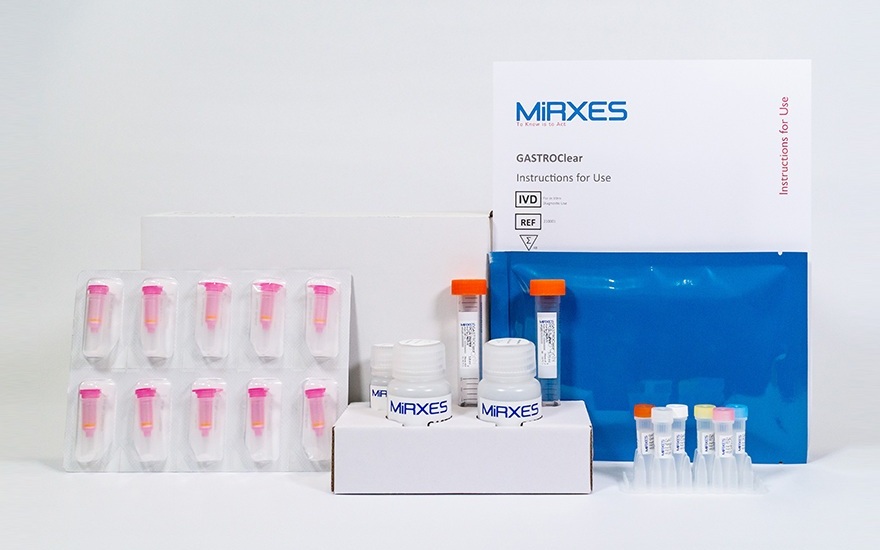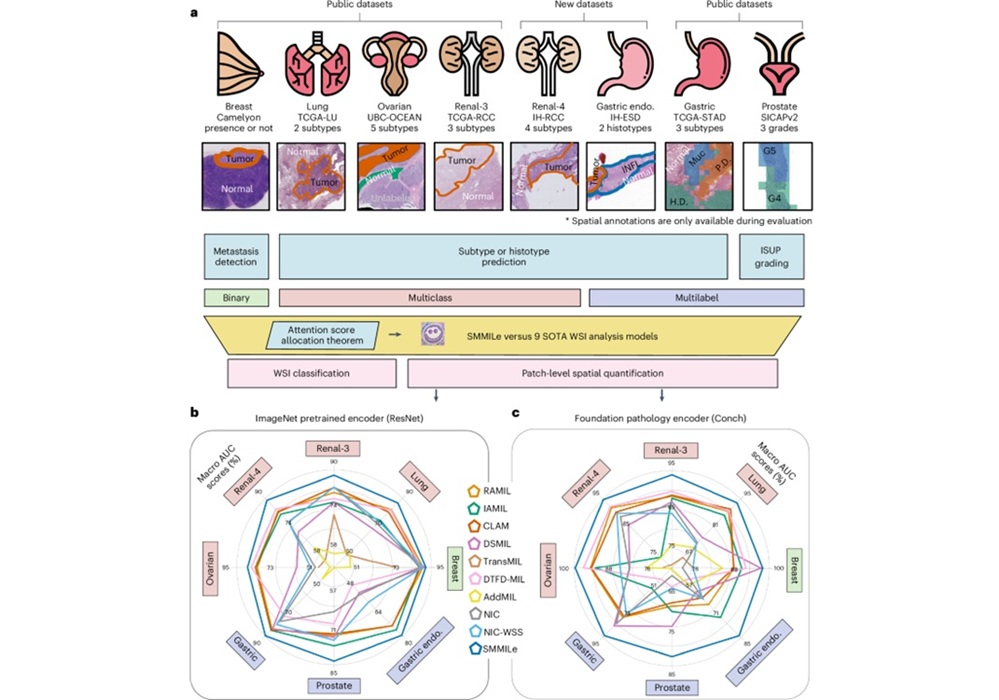Global qPCR Instruments Market to Touch USD 1.4 Billion by 2028 on Back of Spike in COVID-19 Infections
|
By Dan Gueron, New Media Director Posted on 26 Oct 2021 |

The global qPCR instruments market is expected to expand at a CAGR of 3.4% from 2021 to 2028 to reach USD 1.39 billion by 2028, driven by the introduction of novel advanced products and an increase in demand for highly efficient diagnostic equipment. The demand for qPCR instruments and consumables is being driven by the spike in the incidence of SARS-CoV-2 infections globally. The rise in the incidence is expected to add to the number of preventive screenings. This can be attributed to the fact that nations cannot determine the number of COVID-19 patients without screening them.
These are the latest findings of Grand View Research, Inc. (San Francisco, CA, USA), a market research and consulting company.
The miniaturization of three basic molecular assays is expected to increase the accuracy and specificity of diagnostic outcomes, and hence, increase the demand for molecular diagnostic products. These improvements are expected to improve the availability of POC molecular diagnostic tests to yield quick and effective test results. In recent years, PCR has witnessed technological advancements in terms of sensitivity, accuracy, efficiency, and cost-effectiveness. The key players in the market are introducing novel technologies to maintain a competitive edge. Newly-launched products are providing consumers with improved workflows and high-volume testing to deliver faster results. Cost-effectiveness and software that are simplified offer additional advantages.
However, unmet needs in the market are high. For instance, the lack of affordable qPCR instruments is keeping the market from reaching its full potential. The market also has a high threat of external substitutes owing to the presence of digital PCR instruments that are highly advanced and more accurate. The strong threat of internal substitution can be attributed to the presence of numerous products available in the market. However, the higher price of these instruments is anticipated to reduce the overall threat, keeping it at a moderate level. Additionally, COVID-19 has increased the available opportunities for diagnostic devices. However, advanced PCR technologies, such as dPCR, are preferred more in developed economies as they can help reduce false-positive rates. The research on developing efficient qPCR instruments can reduce the threat of substitution of devices and improve market growth.
Geographically, North America held the largest revenue share of the global qPCR instruments market in 2020 and is expected to maintain its lead during the forecast period due to improving regulatory support and increasing launches of novel products. The market for qPCR instruments in Asia Pacific is expected to witness the fastest growth over the forecast period due to the increasing number of investments aimed at improving diagnostic infrastructure and the growing prevalence of infectious diseases in the region.
Related Links:
Grand View Research, Inc.
Latest Industry News
- Abbott Acquires Cancer-Screening Company Exact Sciences
- Roche and Freenome Collaborate to Develop Cancer Screening Tests
- Co-Diagnostics Forms New Business Unit to Develop AI-Powered Diagnostics
- Qiagen Acquires Single-Cell Omics Firm Parse Biosciences
- Puritan Medical Products Showcasing Innovation at AMP2025 in Boston
- Advanced Instruments Merged Under Nova Biomedical Name
- Bio-Rad and Biodesix Partner to Develop Droplet Digital PCR High Complexity Assays
- Hologic to be Acquired by Blackstone and TPG
- Bio-Techne and Oxford Nanopore to Accelerate Development of Genetics Portfolio
- Terumo BCT and Hemex Health Collaborate to Improve Access to Testing for Hemoglobin Disorders
- Revvity and Sanofi Collaborate on Program to Revolutionize Early Detection of Type 1 Diabetes
- GSI Group Acquires Blood Processing Equipment Manufacturer GenesisBPS
- ELITech and Hitachi High-Tech to Develop Automated PCR Testing System for Infectious Diseases
- Lumiquick Acquires Aoxre to Expand Global IVD and Research Capabilities
- Lunit and Agilent Partner to Develop AI-Powered Cancer Diagnostics
- Qiagen and Oxford Gene Technology Partner on Sequencing Panel Interpretation
Channels
Clinical Chemistry
view channel
Chemical Imaging Probe Could Track and Treat Prostate Cancer
Prostate cancer remains a leading cause of illness and death among men, with many patients eventually developing resistance to standard hormone-blocking therapies. These drugs often lose effectiveness... Read more
Mismatch Between Two Common Kidney Function Tests Indicates Serious Health Problems
Creatinine has long been the standard for measuring kidney filtration, while cystatin C — a protein produced by all human cells — has been recommended as a complementary marker because it is influenced... Read moreMolecular Diagnostics
view channel
Blood Protein Profiles Predict Mortality Risk for Earlier Medical Intervention
Elevated levels of specific proteins in the blood can signal increased risk of mortality, according to new evidence showing that five proteins involved in cancer, inflammation, and cell regulation strongly... Read more
First Of Its Kind Blood Test Detects Gastric Cancer in Asymptomatic Patients
Each year, over 1 million people worldwide are diagnosed with gastric (stomach) cancer, and over 800,000 people die of the disease. It is among the top 5 deadliest cancers worldwide for both men and women.... Read moreHematology
view channel
Platelet Activity Blood Test in Middle Age Could Identify Early Alzheimer’s Risk
Early detection of Alzheimer’s disease remains one of the biggest unmet needs in neurology, particularly because the biological changes underlying the disorder begin decades before memory symptoms appear.... Read more
Microvesicles Measurement Could Detect Vascular Injury in Sickle Cell Disease Patients
Assessing disease severity in sickle cell disease (SCD) remains challenging, especially when trying to predict hemolysis, vascular injury, and risk of complications such as vaso-occlusive crises.... Read more
ADLM’s New Coagulation Testing Guidance to Improve Care for Patients on Blood Thinners
Direct oral anticoagulants (DOACs) are one of the most common types of blood thinners. Patients take them to prevent a host of complications that could arise from blood clotting, including stroke, deep... Read moreImmunology
view channel
Gene Signature Test Predicts Response to Key Breast Cancer Treatment
DK4/6 inhibitors paired with hormone therapy have become a cornerstone treatment for advanced HR+/HER2– breast cancer, slowing tumor growth by blocking key proteins that drive cell division.... Read more
Chip Captures Cancer Cells from Blood to Help Select Right Breast Cancer Treatment
Ductal carcinoma in situ (DCIS) accounts for about a quarter of all breast cancer cases and generally carries a good prognosis. This non-invasive form of the disease may or may not become life-threatening.... Read moreMicrobiology
view channel
Rapid Assay Identifies Bloodstream Infection Pathogens Directly from Patient Samples
Bloodstream infections in sepsis progress quickly and demand rapid, precise diagnosis. Current blood-culture methods often take one to five days to identify the pathogen, leaving clinicians to treat blindly... Read more
Blood-Based Molecular Signatures to Enable Rapid EPTB Diagnosis
Extrapulmonary tuberculosis (EPTB) remains difficult to diagnose and treat because it spreads beyond the lungs and lacks easily accessible biomarkers. Despite TB infecting 10 million people yearly, the... Read more
15-Minute Blood Test Diagnoses Life-Threatening Infections in Children
Distinguishing minor childhood illnesses from potentially life-threatening infections such as sepsis or meningitis remains a major challenge in emergency care. Traditional tests can take hours, leaving... Read more
High-Throughput Enteric Panels Detect Multiple GI Bacterial Infections from Single Stool Swab Sample
Gastrointestinal (GI) infections are among the most common causes of illness worldwide, leading to over 1.7 million deaths annually and placing a heavy burden on healthcare systems. Conventional diagnostic... Read morePathology
view channel
AI Tool Rapidly Analyzes Complex Cancer Images for Personalized Treatment
Complex digital biopsy images that typically take an expert pathologist up to 20 minutes to assess can now be analyzed in about one minute using a new artificial intelligence (AI) tool. The technology... Read more
Diagnostic Technology Performs Rapid Biofluid Analysis Using Single Droplet
Diagnosing disease typically requires milliliters of blood drawn at clinics, depending on needles, laboratory infrastructure, and trained personnel. This process is often painful, resource-intensive, and... Read moreTechnology
view channel
AI Saliva Sensor Enables Early Detection of Head and Neck Cancer
Early detection of head and neck cancer remains difficult because the disease produces few or no symptoms in its earliest stages, and lesions often lie deep within the head or neck, where biopsy or endoscopy... Read more




 assay.jpg)

















